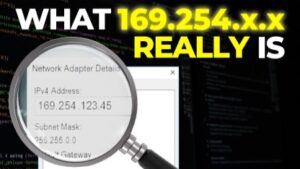Packet Tracer file (PT Version 7.1): https://bit.ly/2JiCvSj
Get the Packet Tracer course for only $10 by clicking here: https://goo.gl/vikgKN
Get my ICND1 and ICND2 courses for $10 here: https://goo.gl/XR1xm9 (you will get ICND2 as a free bonus when you buy the ICND1 course).
For lots more content, visit http://www.davidbombal.com – learn about GNS3, CCNA, Packet Tracer, Python, Ansible and much, much more.
#CCNA #PacketTracer #CCENT
What is a “EIGRP K-value mismatch”?
EIGRP K values are the metrics that EIGRP uses to calculate routes. Mismatched K values can prevent neighbor relationships from being established and can negatively impact network convergence.
The following error message is displayed on the console of a Device because the K values are mismatched:
%DUAL-5-NBRCHANGE: IP-EIGRP(0) 1: Neighbor 10.1.1.1 (Ethernet0/0) is down: K-value mismatch
The following are two scenarios where the above error message can be displayed:
Two devices are connected on the same link and configured to establish a neighbor relationship. However, each device is configured with different K values.
One of two peers has transmitted a “peer-termination” message (a message that is broadcast when an EIGRP routing process is shut down), and the receiving device does not support this message. The receiving device will interpret this message as a K-value mismatch.
Enhanced Interior Gateway Routing Protocol (EIGRP) is an advanced distance-vector routing protocol that is used on a computer network for automating routing decisions and configuration. The protocol was designed by Cisco Systems as a proprietary protocol, available only on Cisco routers. Partial functionality of EIGRP was converted to an open standard in 2013 and was published with informational status as RFC 7868 in 2016.
EIGRP is used on a router to share routes with other routers within the same autonomous system. Unlike other well known routing protocols, such as RIP, EIGRP only sends incremental updates, reducing the workload on the router and the amount of data that needs to be transmitted.
EIGRP replaced the Interior Gateway Routing Protocol (IGRP) in 1993. One of the major reasons for this was the change to classless IPv4 addresses in the Internet Protocol, which IGRP could not support.
Almost all routers contain a routing table that contains rules by which traffic is forwarded in a network. If the router does not contain a valid path to the destination, the traffic is discarded. EIGRP is a dynamic routing protocol by which routers automatically share route information. This eases the workload on a network administrator who does not have to configure changes to the routing table manually.
In addition to the routing table, EIGRP uses the following tables to store information:
Neighbor Table: The neighbor table keeps a record of the IP addresses of routers that have a direct physical connection with this router. Routers that are connected to this router indirectly, through another router, are not recorded in this table as they are not considered neighbors.
Topology Table: The topology table stores routes that it has learned from neighbor routing tables. Unlike a routing table, the topology table does not store all routes, but only routes that have been determined by EIGRP. The topology table also records the metrics for each of the listed EIGRP routes, the feasible successor and the successors. Routes in the topology table are marked as “passive” or “active”. Passive indicates that EIGRP has determined the path for the specific route and has finished processing. Active indicates that EIGRP is still trying to calculate the best path for the specific route. Routes in the topology table are not usable by the router until they are inserted into the routing table. The topology table is never used by the router to forward traffic. Routes in the topology table will not be inserted into the routing table if they are active, are a feasible successor, or have a higher administrative distance than an equivalent path.
Information in the topology table may be inserted into the router’s routing table and can then be used to forward traffic. If the network changes (for example, a physical link fails or is disconnected), the path will become unavailable. EIGRP is designed to detect these changes and will attempt to find a new path to the destination. The old path that is no longer available is removed from the routing table. Unlike most distance vector routing protocols, EIGRP does not transmit all the data in the router’s routing table when a change is made, but will only transmit the changes that have been made since the routing table was last updated. EIGRP does not send its routing table periodically, but will only send routing table data when an actual change has occurred. This behavior is more inline with link-state routing protocols, thus EIGRP is mostly considered a hybrid protocol.














